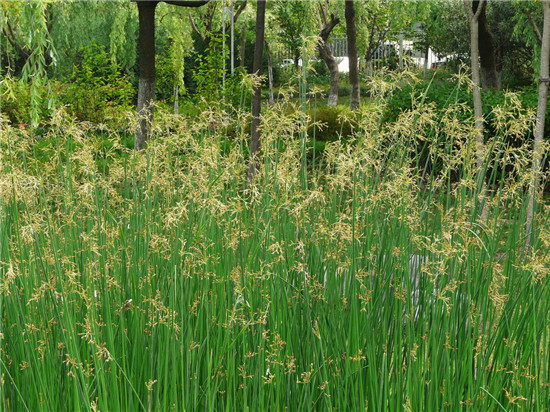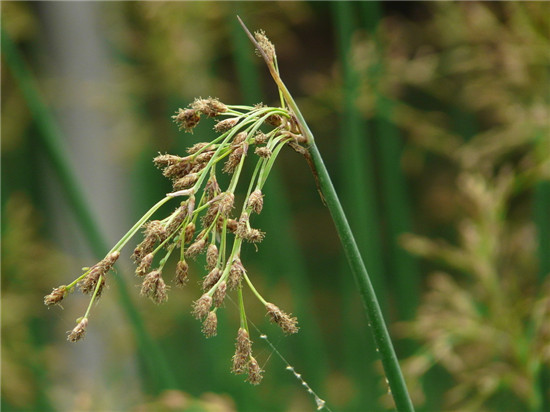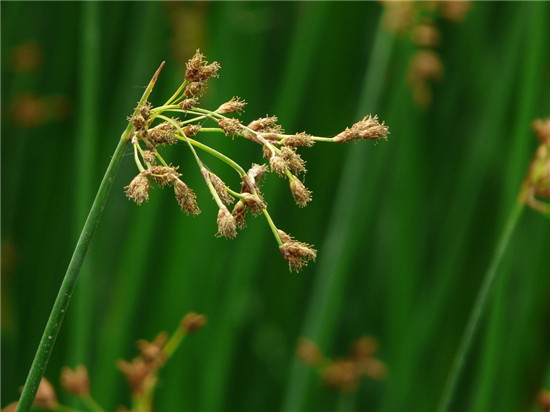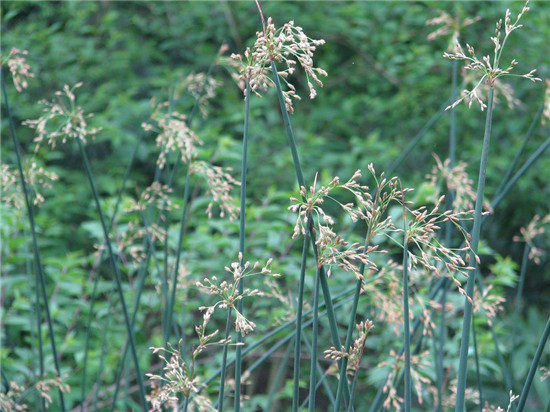The characteristics of water onion
Spring onion is a perennial perennial herb of Cyperaceae. The stem is tall and straight, much like edible green onions, so let's learn about this kind of plant together.

Spring onion is a perennial perennial herb of Cyperaceae. It is 1-2 meters high and its stem is tall and straight. It is very similar to edible green onion, but it is not edible. Often grows in lakes, watersides, shallow ponds, swamps or wetland grass. The aboveground parts of spring onions can be used as medicine, which has the effect of promoting diuresis and reducing swelling.
Water onion not only has a good ornamental effect, but also can purify the water environment. It can absorb nitrogen, phosphorus and other nutrient elements in the bottom sludge and improve the eutrophication of water, so as to purify the water body.
Spring onion also has a certain medicinal value, its stem can be used as medicine, it has the effect of dehumidification and diuresis and eliminating edema. In addition, the stems of spring onions can be used as textile materials or papermaking materials.

Morphological characteristics of onion
Perennial herbs with perennial roots. The plant is 1-2 meters high and the stem is tall and straight, much like the green onions we eat, but not edible. The rod is cylindrical and hollow. The rhizome is thick and creeping, with many whiskers. There are 3-4 membranous tubular leaf sheaths at the base, the sheaths up to 40 cm long, and the uppermost leaf sheath with leaves.
The linear blade is 2-11 cm long. Panicle pseudolateral, inflorescence like terminal. The bracts extend from the top of the culm, with several radiating branches at the top, up to 5 cm long, elliptic or ovate spikelets solitary or 2-3 clusters on the tip of the radiating branches, 5-15 mm long and 2-4 mm wide, with many flowers on them.

The scales are ovate with a small notch at the tip, protruding into a short tip, with a tomentose margin and spots on both sides of the back. 6 barbed inferior setae are brown, as long as nutlets; stamens 3, stigma bifid, slightly longer than style. Nutlets Obovate, biconvex, ca. 2-3 mm. The flower and fruit period is from June to September.
Key points of planting water onion
1. Spring onions like cool climate, avoid extreme heat, frost and cold resistance. The requirement of winter temperature is not very strict, as long as it can survive the winter safely without frost, it dies when the temperature is more than 30 ℃ in late spring and early summer, and the most suitable growth temperature is 15-25 ℃. Try to sow seeds in autumn and winter to avoid high temperatures in summer.

2. In late autumn, winter and early spring, because the temperature is not very high, it should be given direct sunlight to facilitate its photosynthesis and the formation of flower buds, flowering and fruiting. If you encounter hot weather in summer, you need to shield it from about 50% of the sun. For indoor maintenance and viewing after flowering, it should be placed near the southeast doors and windows in order to prolong the flowering period and increase the number of flowers as much as possible.
The above is the whole content of the characteristics of water onions that I have summarized for you. I hope this article can help you. Please continue to follow us.
Related
- Wuhan Hospital Iron Tree Blooming Result Was Instantly Frightened by the Gardener Master
- Which variety of camellia is the most fragrant and best? Which one do you like best?
- What is the small blue coat, the breeding methods and matters needing attention of the succulent plant
- Dormancy time and maintenance management of succulent plants during dormancy
- Minas succulent how to raise, Minas succulent plant pictures
- What are the varieties of winter succulent plants
- How to raise succulent plants in twelve rolls? let's take a look at some experience of breeding twelve rolls.
- Attention should be paid to water control for succulent plants during dormant period (winter and summer)
- Watering experience of twelve rolls of succulent plants
- Techniques for fertilizing succulent plants. An article will let you know how to fertilize succulent plants.



